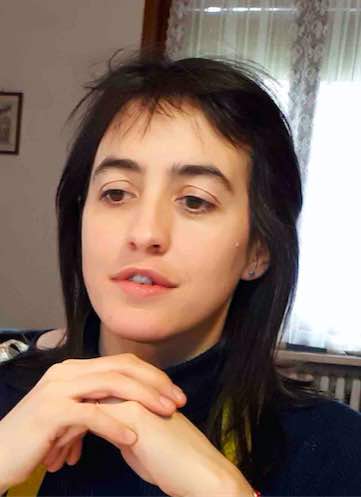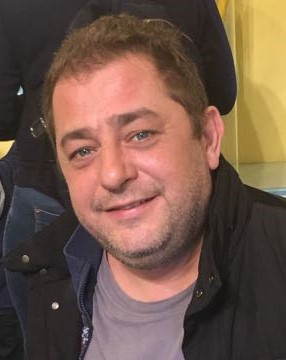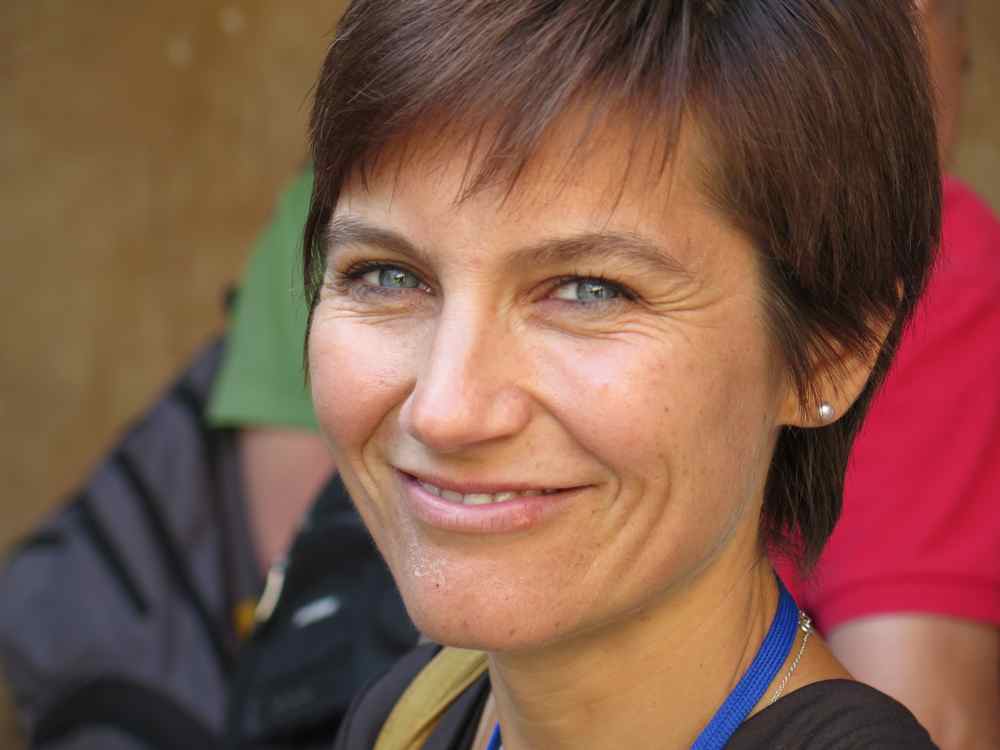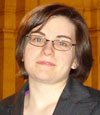Studying at the University of Verona
Here you can find information on the organisational aspects of the Programme, lecture timetables, learning activities and useful contact details for your time at the University, from enrolment to graduation.
Academic calendar
The academic calendar shows the deadlines and scheduled events that are relevant to students, teaching and technical-administrative staff of the University. Public holidays and University closures are also indicated. The academic year normally begins on 1 October each year and ends on 30 September of the following year.
Course calendar
The Academic Calendar sets out the degree programme lecture and exam timetables, as well as the relevant university closure dates..
| Period | From | To |
|---|---|---|
| I sem. | Oct 3, 2016 | Jan 31, 2017 |
| II sem. | Mar 1, 2017 | Jun 9, 2017 |
| Session | From | To |
|---|---|---|
| Sessione invernale Appelli d'esame | Feb 1, 2017 | Feb 28, 2017 |
| Sessione estiva Appelli d'esame | Jun 12, 2017 | Jul 31, 2017 |
| Sessione autunnale Appelli d'esame | Sep 1, 2017 | Sep 29, 2017 |
| Session | From | To |
|---|---|---|
| Sessione estiva Appelli di Laurea | Jul 20, 2017 | Jul 20, 2017 |
| Sessione autunnale Appelli di laurea | Nov 23, 2017 | Nov 23, 2017 |
| Sessione invernale Appelli di laurea | Mar 22, 2018 | Mar 22, 2018 |
| Period | From | To |
|---|---|---|
| Festa di Ognissanti | Nov 1, 2016 | Nov 1, 2016 |
| Festa dell'Immacolata Concezione | Dec 8, 2016 | Dec 8, 2016 |
| Vacanze di Natale | Dec 23, 2016 | Jan 8, 2017 |
| Vacanze di Pasqua | Apr 14, 2017 | Apr 18, 2017 |
| Anniversario della Liberazione | Apr 25, 2017 | Apr 25, 2017 |
| Festa del Lavoro | May 1, 2017 | May 1, 2017 |
| Festa della Repubblica | Jun 2, 2017 | Jun 2, 2017 |
| Vacanze estive | Aug 8, 2017 | Aug 20, 2017 |
Exam calendar
Exam dates and rounds are managed by the relevant Science and Engineering Teaching and Student Services Unit.
To view all the exam sessions available, please use the Exam dashboard on ESSE3.
If you forgot your login details or have problems logging in, please contact the relevant IT HelpDesk, or check the login details recovery web page.
Should you have any doubts or questions, please check the Enrollment FAQs
Academic staff
 alberto.benvegnu@univr.it
alberto.benvegnu@univr.it
 maurizio.boscaini@univr.it
maurizio.boscaini@univr.it
 federico.busato@univr.it
federico.busato@univr.it

Cordoni Francesco Giuseppe
 francescogiuseppe.cordoni@univr.it
francescogiuseppe.cordoni@univr.it

Magazzini Laura
 laura.magazzini@univr.it
laura.magazzini@univr.it
 045 8028525
045 8028525
 gino.mariotto@univr.it
gino.mariotto@univr.it
Zini Giovanni

Zoppello Marta
 simone.zuccher@univr.it
simone.zuccher@univr.it
Study Plan
The Study Plan includes all modules, teaching and learning activities that each student will need to undertake during their time at the University.
Please select your Study Plan based on your enrollment year.
1° Year
| Modules | Credits | TAF | SSD |
|---|
2° Year activated in the A.Y. 2017/2018
| Modules | Credits | TAF | SSD |
|---|
3° Year activated in the A.Y. 2018/2019
| Modules | Credits | TAF | SSD |
|---|
| Modules | Credits | TAF | SSD |
|---|
| Modules | Credits | TAF | SSD |
|---|
| Modules | Credits | TAF | SSD |
|---|
| Modules | Credits | TAF | SSD |
|---|
Legend | Type of training activity (TTA)
TAF (Type of Educational Activity) All courses and activities are classified into different types of educational activities, indicated by a letter.
Operations Research (2018/2019)
Teaching code
4S00001
Teacher
Coordinator
Credits
6
Language
Italian
Scientific Disciplinary Sector (SSD)
MAT/09 - OPERATIONS RESEARCH
Period
II semestre dal Mar 4, 2019 al Jun 14, 2019.
Learning outcomes
The student of mathematics (L40, Verona) will encounter in concrete the concepts of: problems, models, formulations of operations research, but also of instances, algorithms, reductions and mappings among problems of the computer science field. The course will propose some models of operations research, at least the following: linear programming (LP), integer linear programming (ILP), max-flows and min-cuts, bipartite matchings and node covers, minimum spanning trees, shortest paths, Eulerian paths, and some models resorting on dynamic programming among which some knapsack variants. For all these models/problems, except PLI, the student will learn the solving algorithms, the properties on which they hinge, and how to conduct their execution.
However, besides and beyond this, the course aims at building a good and active relationship, practice, and acquaintance, with general mathematical methodologies and techniques (more typical of discrete math and for this reason not yet fully assimilated from our students) and some basic underpinnings of computer science. In particular, we insist on the dialog with problems and with the art/technique of conjecturing, no occasion is lost to spotlight where invariants and monovariants play a role in proofs, algorithms and data structures. We build up confidence with mathematical induction as an active tool for problem solving, and introducing the dialects of induction most voted to efficiency (divide et impera, recursion with memoization, dynamic programming). Some basic principles of informatics are underlined, like coding, algorithms, data structures, recursion as a counterpart of mathematical induction and of computability. (In some editions of the course first scratch introductions to numerability and computability have been offered). Coming to efficiency, our central perspective, the use of asymptotic notation is justified and adopted, the classes P, NP, coNP are introduced, and the concepts of good characterizations, good conjectures and good theorems are illustrated in length and complexity theory is advertised as a lively source of new methodologies in the art of facing problems and enquiry their intrinsic structural properties. Several aspects of the role and importance of the art of reducing one problem to another are discussed and clarified. The life cycle of a good conjecture, the workflow linking good conjectures and algorithms, the production and interpretation of counterexamples as a means of dialog with the problem, and the possible use of them in obtaining NP-completeness proofs, are all discussed, investigated and exemplified in action.
Explicit emphasis is constantly given to the role and use of certificates. Meanwhile these transversal and high competences of methodological interest and imprinting are delivered, the students is asked to learn and develop several concrete procedural competences, in particular within LP, and in an algorithmic treatment of graph theory, introduced as a versatile model and an intuitive and expressive language for the formulation of problems.
For a complete and detailed list of all these procedural competences delivered and requested, see the past exams and corrections over the various editions of the course.
The notions from computational complexity introduced in the course, and the attention to the languages of the certificates, will lead the student to recognize with more awareness the structure of a sound proof.
Dealing with instances, problems, models, both from the perspective of algorithms and of models and formulations, will enforce the attitude and competence in casting simple problems from the applications into mathematical models.
The knowledge of the paradigmatic results of linear programming theory (duality, complementary slackness, economic interpretation, sensitivity analysis) will provide the student with important tools in obtaining non-trivial insights on the practical problem from the model.
Program
Operations Research offers quantitative methods and models for the optimal management of resources, and optimization of profits, services, strategies, procedures.
This course of Operations Research gets to Mathematical Programming
moving from Algorithmics and Computational Complexity.
After revisiting mathematical induction, recursion, divide et impera, with a curiosity driven problem solving approach, we insist on dynamic programming thinking which gets then exemplified in a few classical models of Operations Research and Computational Biology.
With emphasis on method and techniques, we get involved in formulating, encoding and modeling problems, conjecturing about them, reducing one to the other,
and well characterizing them.
The course offers an in-depth introduction to linear programming.
Following the historical path, we introduce graphs as for modeling,
and explore the basic fundamental results in combinatorial optimization and graph theory.
LIST OF TOPICS:
1. Basic Notions
problems
models
algorithms
complexity
2. Introduction to Algorithms and Complexity
analysis of a few algorithms
design techniques (recursion, divede et impera, recursion with memoization, dynamic programming, greedy)
complexity theory (P, NP, co-NP, good characterizations, good conjectures, examples of NP-completeness proofs)
3. Combinatorial Optimization Models
knapsack problems
Problems on sequences
Problems on DAGs
4. Introduction to Graph Theory
graphs and digraphs as models
a few good characterizations (bipartite, Eulerian, acyclic, planar graphs)
a few NP-hard models (Hamilton cycles, cliques, colorability)
shortest paths
minimum spanning trees
maximum flows
bipartite matchings
5. Linear Programming (LP)
the LP and the ILP models (definition, motivations, complexity, role)
geometric method and view (feasibility space,
pivot, duality, dual variables, degeneracy, complementary slackness)
standard and canonical form
simplex method
duality theory
complementary slackness
economic interpretation of the dual variables
sensitivity analysis
BOOKS, NOTES AND OTHER DIDACTIC MATERIALS AND RESOURCES:
At the following page you find a list of available materials (books, notes, videos) about topics covered within the course:
http://profs.sci.univr.it/~rrizzi/classes/RO/materiali
If you find out further effective material help us enlarging this list.
TUTORING (IF AVAILABLE):
For the 2017-18 edition we are planning to introduce a tutor that will assist and guide the students in performing the exercises suggested during the class and in conducting practical experiences.
| Author | Title | Publishing house | Year | ISBN | Notes |
|---|---|---|---|---|---|
| Christos H. Papadimitriou, Kenneth Steiglitz | Combinatorial optimization : algorithms and complexity | Dover Publications, Inc. | 1998 | 0-486-40258-4 | |
| Robert J. Vanderbei | Linear Programming: Foundations and Extensions (Edizione 4) | Springer | 2001 | 978-1-4614-7630-6 |
Examination Methods
At the end of the course, a written exam with various types of exercises and questions, and several opportunities to gather points to test and prove your preparation. You can add to the mark acquired at the exam by conducting projects aiming at improving aspects and/or materials of the course in a broad sense.
In preparing yourself for this exam,
take profit of the material (text and correction for each previous exam) available at the website of the course:
http://profs.sci.univr.it/~rrizzi/classes/RO/index.html
We also suggest to consult the three files:
prepararsi_esame.pdf, procedura_esame.pdf and dopo_esame.pdf
contained in folder 000-INFO-ESAME-000 contained, at the same page, among the folders of each previous exams. The approach and spirit with which you should elaborate your answers to the exercises is indeed related to some deep methodological messages at the core of the course, and it might turn difficult to achieve full satisfaction and recognizement at the exam without having adopted these approaches which can go easily overlooked.
There are 4 exam sessions each academic year (June, July, September, February). The exam is the very same regardless on whether you have attended or not the course. The archives of the past exams, the relative corrections, and the videos of the classes, all can help overcoming the difficulties of the non-attending student.
Type D and Type F activities
Modules not yet included
Career prospects
Module/Programme news
News for students
There you will find information, resources and services useful during your time at the University (Student’s exam record, your study plan on ESSE3, Distance Learning courses, university email account, office forms, administrative procedures, etc.). You can log into MyUnivr with your GIA login details: only in this way will you be able to receive notification of all the notices from your teachers and your secretariat via email and also via the Univr app.
Graduation
Documents
| Title | Info File |
|---|---|
|
|
pdf, it, 31 KB, 29/07/21 |
|
|
pdf, it, 31 KB, 29/07/21 |
|
|
pdf, it, 171 KB, 20/03/24 |
List of thesis proposals
| theses proposals | Research area |
|---|---|
| Formule di rappresentazione per gradienti generalizzati | Mathematics - Analysis |
| Formule di rappresentazione per gradienti generalizzati | Mathematics - Mathematics |
| Proposte Tesi A. Gnoatto | Various topics |
| Mathematics Bachelor and Master thesis titles | Various topics |
| THESIS_1: Sensors and Actuators for Applications in Micro-Robotics and Robotic Surgery | Various topics |
| THESIS_2: Force Feedback and Haptics in the Da Vinci Robot: study, analysis, and future perspectives | Various topics |
| THESIS_3: Cable-Driven Systems in the Da Vinci Robotic Tools: study, analysis and optimization | Various topics |
Attendance
As stated in the Teaching Regulations for the A.Y. 2022/2023, except for specific practical or lab activities, attendance is not mandatory. Regarding these activities, please see the web page of each module for information on the number of hours that must be attended on-site.
Career management
Student login and resources
Erasmus+ and other experiences abroad
Orientamento in itinere per studenti e studentesse
La commissione ha il compito di guidare le studentesse e gli studenti durante l'intero percorso di studi, di orientarli nella scelta dei percorsi formativi, di renderli attivamente partecipi del processo formativo e di contribuire al superamento di eventuali difficoltà individuali.
E' composta dai proff. Sisto Baldo, Marco Caliari, Francesca Mantese, Giandomenico Orlandi e Nicola Sansonetto




























